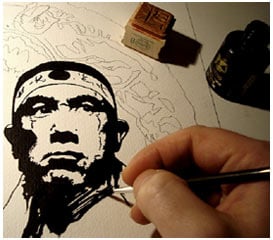I wrote recently about how the Japanese use the katakana writing system to phonetically represent foreign place names like “Grand Canyon” or “Los Angeles,” quite different from Chinese which must assign unique characters for each place in the world. The current usage of katakana as a writing system for foreign loan words is actually quite recent, dating from postwar educational reforms. (It’s quite common to encounter a word that violates modern usage rules such as the English word “coffee” which can be written in kanji, because it’s been around so long.) Back in the Meiji Era, all the countries of the world received a kanji character which was used to represent that country. Sometimes the meaning is logical — nichi (sun) represents Japan while chu (center) stands for China — although most are arbitrarily assigned based on pronunciation. The system is somewhat archaic but is still used by government bodies and newspapers, since it’s possible to write complex words like “The Symposium on U.S./Japan Trade Relations” in just a few characters. The other day I went out to a steak house and saw a sign advertising “gorgeous-country beef” (gohshu-gyu) and I wondered if that was somehow related to Kobe beef. Then I remembered the kanji for Australia is “gorgeous” and the restaurant was promoting that their meat had been imported from there. Incidentally, if you’re looking for ideas for one of those custom kanji name stamps J-List sells, getting one with your country’s kanji is a good place to start.

From left, Japan, China, England, France, Germany, America, Australia.















